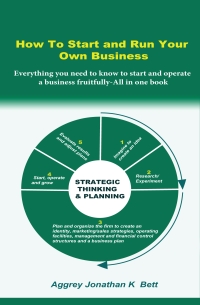Flexing the Budget for Relevant Budget Variances Analysis
As an entrepreneurial writer, I want to share my thoughts on the above-captioned subject. The concept is rarely practised in many businesses, but I find it helpful.
I was once a management accountant, and one of my duties was analyzing budget variances to investigate why actual results deviated from their budgets. Budget variances are the differences between parameters like actual sales and expenses and their budgets in a period like a quarter. Variance analysis is a very effective tool for monitoring and evaluating the progress of financial plans to take corrective actions. The standard way of computing variances in, for example, the statement of comprehensive income (Profit and Loss Account) is to compare actual sales with its budget and the related expenses with their original budgets, whether or not the sales figure was lower or higher than its budget. However, variances calculated in this manner reveal only part of the story. A better way to compute and interrogate variances is to flex the budget when determining deviations. The exercise of flexing the budget is uncommon in many organizations but is helpful to do so. How does this work? Let me explain.
Suppose the organization achieves a higher level of sales than was budgeted at a cost higher than the budget. In that case, you should vary the original budget or flex it to see what the expenditure budget commensurate with the higher level of sales would have been. The recasting of the budget is necessary to calculate the relevant variances. To perform this flexing, you use the percentage of each cost to sales in the original fixed budget to arrive at the new level of the expenses in the flexed budget commensurate with the actual sales recorded.
For example, suppose you have a sales budget of US$17,400, with direct materials costing 75% (US$12,300) of sales and direct costs amounting to 11% (US$1,804). At the end of the quarter, you register higher than budget sales, amounting to US$17,500; cost of materials, amounting to US$13,100; and direct costs, amounting to US$1,909. The fixed budget variances in this case would be sales (US$1,100), materials (US$800) and direct costs (US$105). However, using the costs-to-sales ratios above to flex the budget, the budget costs commensurate with the higher sales of US$17,500 should be materials US$13,125 (75% of US$17,500) and direct costs should be US$1,925 (11% of US$17,500). Therefore, the flexed budget variances should be minus US$25 for materials and minus US$16 for direct costs. Therefore, the relevant variances that the business should interrogate should be US$(25) for materials and US$(16) for direct costs, not US$800 and US$105, respectively, as indicated in the fixed budget. The importance of flexing the budget allows you to focus on relevant variances when appraising performance. As an entrepreneurial writer, I want to share my thoughts on the above-captioned subject. The concept is rarely practised in many businesses, but I find it helpful.
I was once a management accountant, and one of my duties was analyzing budget variances to investigate why actual results deviated from their budgets. Budget variances are the differences between parameters like actual sales and expenses and their budgets in a period like a quarter. Variance analysis is a very effective tool for monitoring and evaluating the progress of financial plans to take corrective actions. The standard way of computing variances in, for example, the statement of comprehensive income (Profit and Loss Account) is to compare actual sales with its budget and the related expenses with their original budgets, whether or not the sales figure was lower or higher than its budget. However, variances calculated in this manner reveal only part of the story. A better way to compute and interrogate variances is to flex the budget when determining deviations. The exercise of flexing the budget is uncommon in many organizations but is helpful to do so. How does this work? Let me explain.
Suppose the organization achieves a higher level of sales than was budgeted at a cost higher than the budget. In that case, you should vary the original budget or flex it to see what the expenditure budget commensurate with the higher level of sales would have been. The recasting of the budget is necessary to calculate the relevant variances. To perform this flexing, you use the percentage of each cost to sales in the original fixed budget to arrive at the new level of the expenses in the flexed budget commensurate with the actual sales recorded.
For example, suppose you have a sales budget of US$17,400, with direct materials costing 75% (US$12,300) of sales and direct costs amounting to 11% (US$1,804). At the end of the quarter, you register higher than budget sales, amounting to US$17,500; cost of materials, amounting to US$13,100; and direct costs, amounting to US$1,909. The fixed budget variances in this case would be sales (US$1,100), materials (US$800) and direct costs (US$105). However, using the costs-to-sales ratios above to flex the budget, the budget costs commensurate with the higher sales of US$17,500 should be materials US$13,125 (75% of US$17,500) and direct costs should be US$1,925 (11% of US$17,500). Therefore, the flexed budget variances should be minus US$25 for materials and minus US$16 for direct costs. Therefore, the relevant variances that the business should interrogate should be US$(25) for materials and US$(16) for direct costs, not US$800 and US$105, respectively, as indicated in the fixed budget. The importance of flexing the budget allows you to focus on relevant variances when appraising performance. As an entrepreneurial writer, I want to share my thoughts on the above-captioned subject. The concept is rarely practised in many businesses, but I find it helpful.

